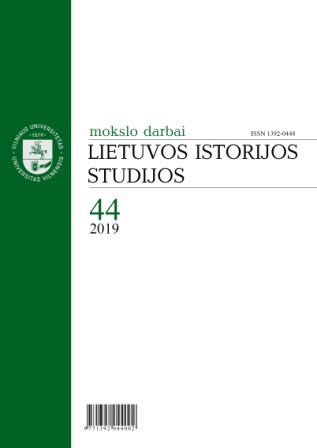Rusėniškų laiškų formuliaras Lietuvos Didžiojoje Kunigaikštystėje ankstyvaisiais naujaisiais laikais
Internal and External Structure of Ruthenian Letters in Early Modern Lithuania
Author(s): Andrej RyčkovSubject(s): Archaeology, Studies of Literature, Local History / Microhistory, Middle Ages, Modern Age
Published by: Vilniaus Universiteto Leidykla
Keywords: Grand Duchy of Lithuania; early modern period; political communication; epistolography; internal and external structure of letters; Ruthenian writings;
Summary/Abstract: A thorough analysis of approximately one hundred unpublished and about seventy published letters written by Lithuanian noblemen and the Grand Duke of Lithuania led to a conclusion that there were three distinct types of letters. They represent correspondence between socially unequal as well as equal individuals. The external structure of a letter does not indicate the social differences between the addresser and the addressee. On the one hand, the external structure of a letter did not represent the addressers themselves; first of all, it was relevant for the intermediaries who confirmed the authenticity of the letters, registered the correspondence, and handed in the letters. On the other hand, the format of the seal is not a reliable indicator as well. The Lithuanian nobility, when communicating amongst themselves, sealed their letters with signets, while in correspondences with foreign countries they normally used larger seals. The Salutation (Latin: salutatio) is the element of a letter’s internal structure that is essential for understanding the power and status relation between an addresser and an addressee. Only “partners” of equal status informed each other on their health conditions or asked about each other’s well-being.
Journal: Lietuvos istorijos studijos
- Issue Year: 2019
- Issue No: 44
- Page Range: 31-46
- Page Count: 16
- Language: Lithuanian

